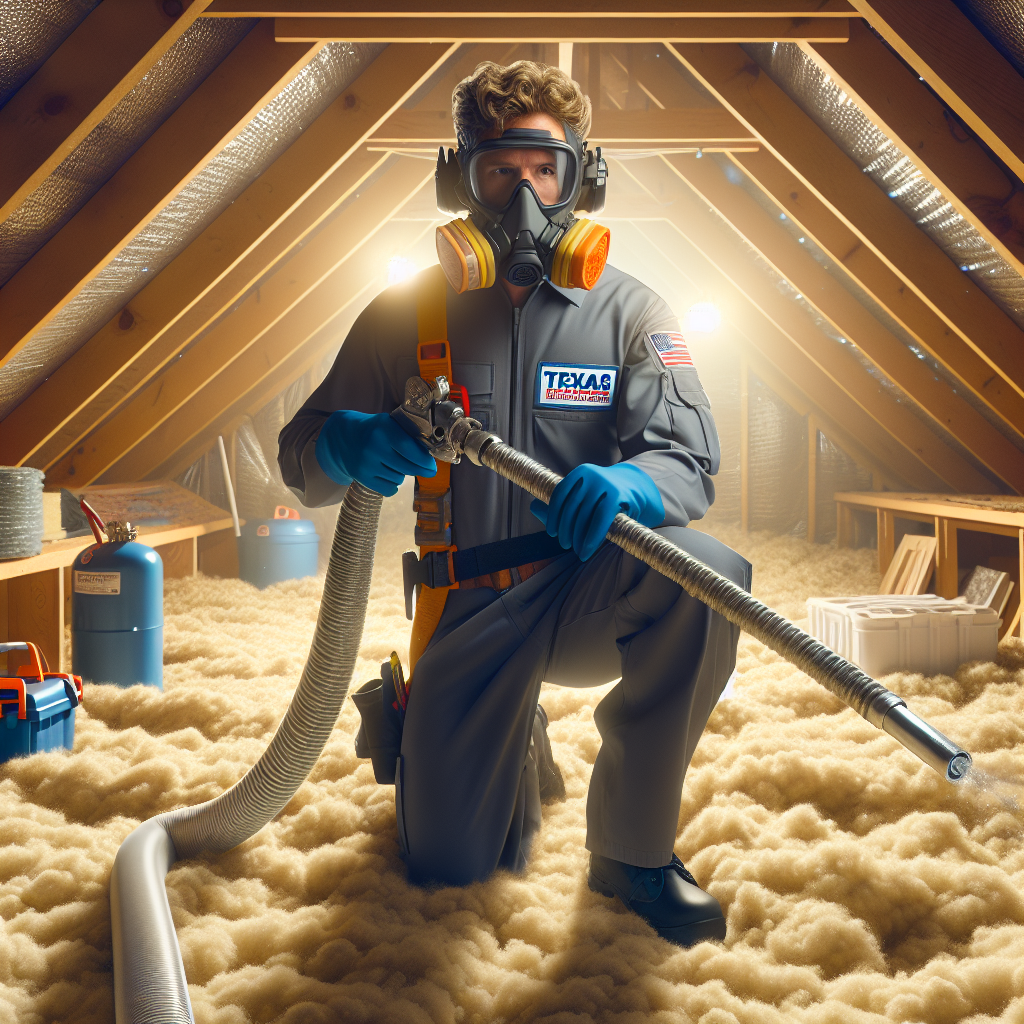-
Table of Contents
<meta name="description" content="Discover the benefits of Blown In Insulation Vacuum R with Texas Insulation Solutions, Houston’s trusted experts in energy-efficient attic insulation and more.” />
Improve your home’s energy efficiency with Blown In Insulation Vacuum R! Get a free quote today at Texas Insulation Solution and start saving on your energy bills!
Blown In Insulation Vacuum R: Houston’s Energy-Efficient Solution

When it comes to maintaining a comfortable home in Houston’s hot and humid climate, proper insulation is essential. Blown In Insulation Vacuum R is a cutting-edge technique that enhances your attic’s thermal performance by efficiently installing high-quality insulation materials. This method not only improves energy efficiency but also helps reduce utility bills, improve indoor air quality, and increase overall home comfort. At Texas Insulation Solutions, we specialize in delivering expert blown-in insulation services tailored to Houston’s unique climate and building needs.
Why Blown In Insulation Vacuum R Matters
Blown In Insulation Vacuum R is more than just a method of installing insulation—it’s a game-changer for homeowners seeking to optimize their home’s energy performance. According to the U.S. Department of Energy, up to 30% of a home’s energy loss occurs through the attic. Proper insulation with a high R-value can drastically reduce this loss, keeping your home cooler in the summer and warmer in the winter.
Houston’s climate demands insulation that can handle extreme heat and humidity. Blown In Insulation Vacuum R ensures a dense, uniform layer of insulation that fills every nook and cranny, eliminating gaps and air leaks that traditional insulation methods often miss. This results in:
- Lower energy consumption and reduced utility bills
- Improved indoor air quality by minimizing dust and allergens
- Enhanced moisture control to prevent mold and mildew growth
- Increased home comfort year-round
Health and safety are also critical. Properly installed blown-in insulation reduces the risk of fire hazards associated with older insulation materials and helps maintain a safer indoor environment.
Key Benefits of Blown In Insulation Vacuum R
- Superior Coverage: The vacuum process ensures insulation reaches tight spaces and irregular surfaces for maximum effectiveness.
- High R-Value: Achieves optimal thermal resistance, improving energy efficiency in Houston’s climate.
- Quick Installation: The vacuum method speeds up the process, minimizing disruption to your home life.
- Eco-Friendly Options: Many blown-in materials are made from recycled content, supporting sustainable building practices.
- Long-Term Durability: Resists settling and maintains performance over time, protecting your investment.
Why Choose Texas Insulation Solutions
As a proud Houston-based company, Texas Insulation Solutions understands the local climate challenges and building codes better than anyone. Our team is committed to delivering energy-saving insulation solutions that enhance your home’s comfort and value.
- Houston-Based Operation: We live and work in the community, providing personalized service with a local touch.
- Energy Savings & Comfort: Our insulation solutions are designed to reduce your energy bills while keeping your home comfortable all year.
- Clean, Fast, Professional Installation: We respect your home and time, ensuring a tidy job site and efficient service.
- Multiple Insulation Types Tailored to Local Needs: From blown-in cellulose to spray foam and radiant barriers, we customize solutions for Houston’s unique weather and building styles.
Related Services
- Blown-In Insulation
- Spray Foam Insulation
- Radiant Barrier Installation
- Insulation Removal & Replacement
- Garage Insulation
- Rodent-Proofing and Sealing
FAQ
- How much does attic insulation cost in Houston?
Costs vary depending on attic size and insulation type, but typical blown-in insulation projects range from $1,500 to $3,500. Texas Insulation Solutions offers free inspections and competitive pricing tailored to your home’s needs. - Do I need insulation replacement or just an upgrade?
If your current insulation is old, damaged, or insufficient (less than R-30), replacement or adding blown-in insulation can significantly improve energy efficiency. Our experts assess your attic and recommend the best approach. - Is blown-in insulation good for Houston’s climate?
Absolutely. Blown-in insulation provides excellent thermal resistance and air sealing, which is crucial for Houston’s hot summers and humid conditions. It also helps control moisture, reducing mold risks. - How long does attic insulation take to install?
Most residential attic insulation projects are completed within one day, depending on the size and complexity. Our team works efficiently to minimize disruption while ensuring quality results. - What areas around Houston do you serve?
Texas Insulation Solutions proudly serves Houston and surrounding neighborhoods including Katy, Sugar Land, The Woodlands, Pearland, Cypress, and more. Contact us to confirm service availability in your area.
Get in Touch with Texas Insulation Solutions
📍 Address: 9707 Braewick Dr, Houston, TX 77096
📞 Call: (832) 396-1116
📧 Email: service@texasinsulationsolution.com
🌐 Website: https://texasinsulationsolution.com
🔗 Facebook: Facebook Profile
🔗 Instagram: @texas_insulation_solutions




